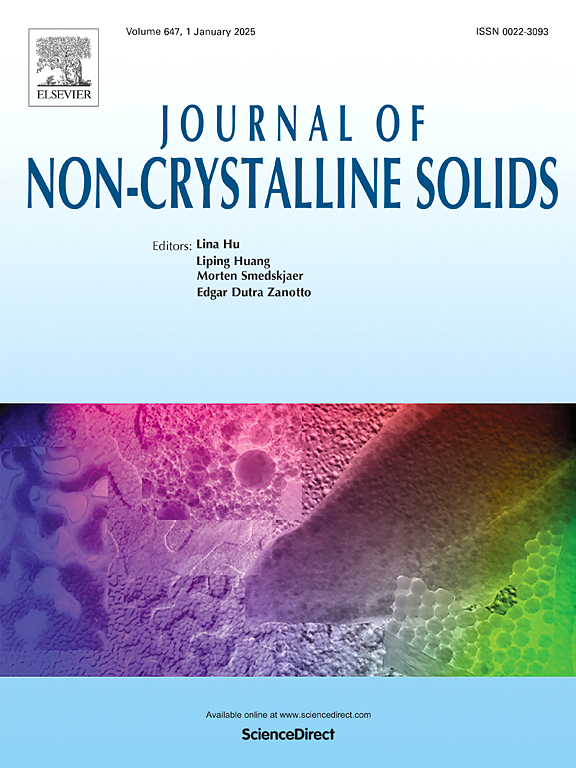Microstructural heterogeneity evolution of Zr-based bulk metallic glass during nanoindentation creep
IF 3.2
3区 材料科学
Q1 MATERIALS SCIENCE, CERAMICS
引用次数: 0
Abstract
The creep behavior and micro-mechanisms of Zr41.2Ti13.8Cu12.5Ni10Be22.5 bulk metallic glass (Zr-BMG) were investigated at room temperature using nanoindentation technology under different loading rates and peak loads (holding loads). The creep stress was calculated using the work-of-indentation, the creep stress-time curve was fitted and analyzed by combining the Kohlrausch-Williams-Watts (KWW) equation, the activation volume formula, and the generalized Maxwell model, revealing the dynamic evolution of microstructural heterogeneity, flow units, relaxation time spectra, and activation energy spectra. The results show that as the peak load and loading rate increase, the stress drop magnitude increases, exhibiting a typical stress relaxation phenomenon. The activation energy is closely related to the internal microstructural heterogeneity, the more significant the microstructural heterogeneity, the lower the required activation energy, making flow units more easily activated. This study provides important experimental evidence and theoretical support for a deeper understanding of the creep behavior and micro-mechanical mechanisms of metallic glass.
求助全文
约1分钟内获得全文
求助全文
来源期刊

Journal of Non-crystalline Solids
工程技术-材料科学:硅酸盐
CiteScore
6.50
自引率
11.40%
发文量
576
审稿时长
35 days
期刊介绍:
The Journal of Non-Crystalline Solids publishes review articles, research papers, and Letters to the Editor on amorphous and glassy materials, including inorganic, organic, polymeric, hybrid and metallic systems. Papers on partially glassy materials, such as glass-ceramics and glass-matrix composites, and papers involving the liquid state are also included in so far as the properties of the liquid are relevant for the formation of the solid.
In all cases the papers must demonstrate both novelty and importance to the field, by way of significant advances in understanding or application of non-crystalline solids; in the case of Letters, a compelling case must also be made for expedited handling.
 求助内容:
求助内容: 应助结果提醒方式:
应助结果提醒方式:


